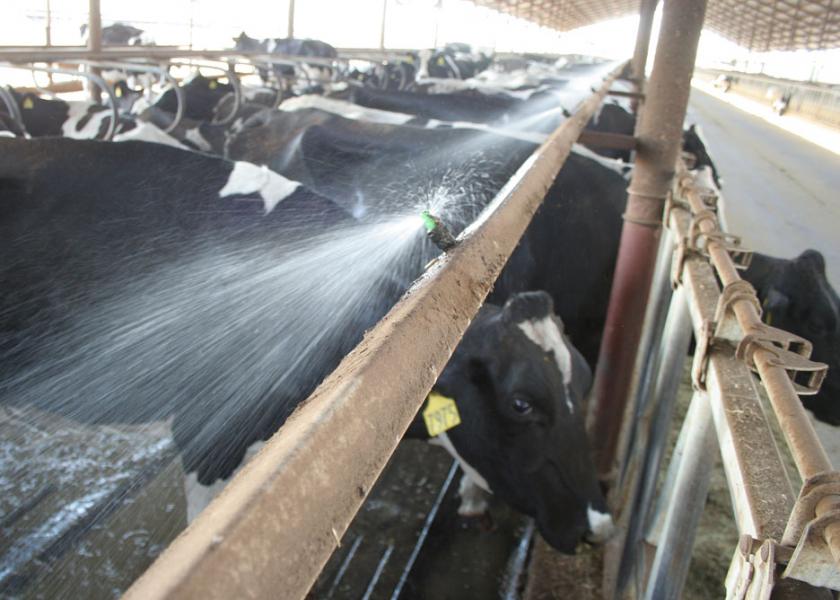Facility Focus: Don’t Let Sprinklers Fizzle Out this Summer

The heat of the summer has officially kicked in and producers across the country are starting to notice the tell tail signs of heat stress in their herds. To combat this, many producers use sprinkler systems to help cool down cattle through evaporative cooling. However, not every system works like it should.
Facility Requirements
When utilizing an evaporative cooling system, there are several factors to keep in mind to cool cows correctly and efficiently. According to John Worley, an Extension engineer at the University of Georgia, several facility requirements are necessary for these systems to work.
One important aspect is making sure you have an ample supply of water. Worley notes that producers should estimate using approximately 25 gallons per cow per day. “A separate water well, or reserve tank and booster pump may be needed to supply the short-term high demand needed by the sprinkler system,” he adds.
Additionally, it’s essential to make sure your facilities can handle this system. The water must go somewhere, so be sure your facilities are able to collect and properly store runoff. Slopped, grooved concrete works best according to Worley as it allows for water to move consistently while also providing traction on the slippery floors.
Also be sure to place these systems in an area where they will be utilized. Typically, sprinklers work best in holding pens or above headlocks where cow frequently visit. “The cooling system is only effective it is used by the cow and results in more feed intake and milk yield,” Worley adds.
Selecting Sprinklers
While cooling cows with water might sound relatively simple, it can be quite complex. John Chastain, Larry Turner and Ricard Warner, Extension agents at the University of Kentucky, offer these tips when it comes to selecting sprinklers specific for cows.
“The most important aspect of selecting a nozzle type is to have a large enough droplet size to wet the cow’s skin,” the agents note. “Irrigation nozzles and solid-cone coarse-droplet spray nozzles are desirable. A size range of 7 to 30 gph (0.12 to 0.5 gpm) per nozzle is preferred to conserve water, reduce the total required flow rate and avoid runoff problems.”
Lastly, the agents advise keeping a keen eye on your control system.
“The controls are a key part of the system for assuring the most effective cooling,” they state. “The system should begin cooling when the temperature reaches 78°F. An adjustable timer with a 30-minute cycle should be used to control the sprinkler interval. In the feed bunk area, an “ON” time of 1 to 3 minutes in each 10 to 15 minutes is recommended. For the holding area, use a slightly longer “ON” time and a shorter “OFF” time than in the feed bunk system.”







